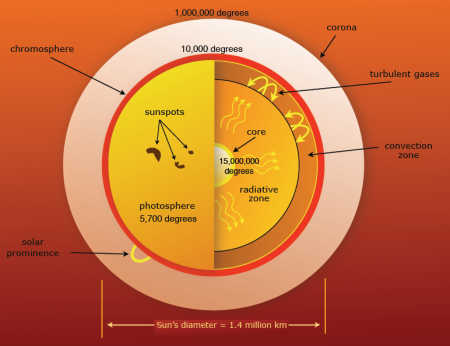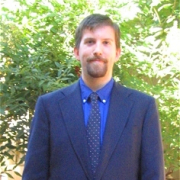|
|
|
|
Dissecting Bad Models -
Solar Temperature Gradient Paradox
by Michael Gmirkin
|
|
May 08, 2010
|
|
|
A number of astrophysical assumptions and deductions have gone unchallenged
for far too long. The thermonuclear sun stands contradicted by empirical observation.
Would Sir Arthur Eddington have abandoned his theory if he knew then what we know now?
Over time, theories tend to cease being thought of as theoretical and begin
to be thought of as unassailable, unquestionable fact. However,
unquestioned fundamental assumptions will one day be science's downfall.
One such theory (that has solidified into rarely questioned "fact") is
the thermonuclear model of the sun. In said model, a star is a ball of gas so
massive that it crushes itself under its own weight and begins to undergo fusion
reactions in its core.
This model traces in large part back to Sir Arthur Eddington, a British astrophysicist
prominent in the early 20th century.
It is not enough to provide for the external radiation of the star. We must provide
for the maintenance of the high internal temperature, without which the star would collapse.
- Arthur Eddington, The Internal Constitution of the
Stars.
No source of energy is of any avail unless it liberates energy in the deep interior of
the star.
- Arthur Eddington, The Internal Constitution of the
Stars.
...by a process of exhaustion we are driven to conclude that the only possible source
of a star's energy is subatomic; yet it must be confessed that the hypothesis shows
little disposition to accommodate itself to the detailed requirements of observation,
and a critic might count up a large number of 'fatal' objections.
- Arthur Eddington, The Internal Constitution of the
Stars.
A cagey critic might point out that according to Karl Popper, it only requires
one substantiated 'fatal objection' to falsify a model.
Is the observable temperature profile of the sun at odds with the
theoretically expected temperature profile? If so, does this constitute a
direct contradiction and thus falsification of existing stellar theory?
Put simply, the thermonuclear model of stars put forth by Eddington, et al
requires nuclear fusion in the core of the star. That fusion liberates energy,
generates extraordinarily high temperatures and thus balances the gases of a star
thermally against collapse due to self-gravitation, in theory.
Thus, astrophysicists
currently
expect of the Sun:
steep temperature gradients from the core outwards.
The rest of the star is heated by energy that is transferred outward from the core
and the layers just outside. The energy produced by fusion in the core must then travel
through many successive layers to the solar photosphere before it escapes into space as sunlight.
It is also noteworthy that:
The solar interior is not directly observable ... Computer modeling of the Sun is ... used
as a theoretical tool to investigate its deeper layers.
But do simple real-world observations back up the grandiose theories
currently in vogue?
They do not.
Leaving aside any specific models of yore, let us objectively observe
what we can of the solar atmosphere's temperature profile.
There are several regions of the solar atmosphere that are directly observable to modern
instruments. From the outermost to the innermost layers, they are the corona, chromosphere
and photosphere, respectively.
|
|
|

From the e-book
Universe
Electric - The Sun
Credit: The Thunderbolts Project
[Click to enlarge]
|
|
|
The corona's
temperature is in the range of 1,000,000 - 4,000,000 Kelvin. The
chromosphere's
temperature is in the range of 20,000 to 1,000,000 Kelvin in the transition region
just below the corona and in the range of 6,000 - 20,000 Kelvin in the lower portion
of the chromosphere. The
photosphere is
cooler still, being approximately in the range of 4,000 - 6,000 Kelvin. The centers of
sunspots,
which are arguably holes punched through the photosphere, are the coolest observable
portion of the sun at approximately 3,000 - 4,500 Kelvin.
Sunspots are produced when vast magnetic fields push through the surface of the sun,
pushing the uppermost layer of the sun's body (the photosphere) away, exposing the
cooler (thus darker) solar interior.
("Cooler" is a misnomer, nothing on the sun can be termed "cool."
But when compared with the photospheric temperature of approximately 6,000 Kelvin, a
sunspot interior can be as low as 3,000 Kelvin.)
Why sunspots should reveal a darker and 'cooler' inside of the sun, when the inside of
the sun is supposed to be hotter than the surface (on account of the thermonuclear
furnace generating extreme temperatures which should diffuse outward), is a mystery.
If sunspots open a hole to a deeper level of the sun, and deeper levels are supposed
to be hotter, should not sunspots be brighter and hotter than the surrounding photosphere?
That sunspots expose a darker and cooler interior appears to belie the thermonuclear sun.
Put frankly, the observable temperatures of the solar atmosphere
invert the theoretically expected temperature profile of the sun. Whereas
the thermonuclear model of the sun expects fusion in the (extremely hot) core and a
steeply declining temperature gradient extending outward, observations show precisely
the opposite! The outermost layer of the sun (directly observable)
is the hottest, while the innermost layer of the sun
(again, directly observable) is the coolest.
One wonders whether Sir Arthur Eddington would have speculated upon the thermonuclear
model of stars had modern observations of temperatures in the solar atmosphere been
available during his day and age.
The observable temperature profile, juxtaposed with the theoretical
wranglings of the thermonuclear model of the Sun and stars leads to a paradox of
thermodynamic proportions!
That is to say, real-world observations show the solar atmosphere to be hottest on the
outside and coolest on the inside. The thermonuclear sun is expected to be hottest on
the inside and coolest on the outside, in theory. If the two models are
superimposed, you arrive at a contradictory state with a hot core and a hot corona
and a temperature minimum at the photosphere (or possibly just below it). That
appears to be precisely the predicament in which astrophysicists find themselves mired.
How can such a temperature minimum be maintained between two extraordinarily hot
regions? Should not heat diffuse from both adjacent hot regions into the cold region,
thus warming it until it disappears completely?
Precisely this question was raised by the electrical engineer Ralph Juergens in 1972:
Essential to the received [thermonuclear sun] theory is the conviction that inside
the sun is a steep temperature gradient, falling toward the photosphere, along which
the internal energy flows outward. If we stack this internal temperature gradient
against the observed temperature gradient in the solar atmosphere, which falls
steeply inward, toward the photosphere, we find we have diagrammed a physical absurdity:
The two gradients produce a trough at the photosphere, which implies that thermal
energy should collect and become stuck there until it raises the temperature and
eliminates the trough. That this does not occur seems to bother no one.
- Ralph E. Juergens.
To date, there does not appear to be any good answer as to why such a contradictory
temperature minimum should exist, let alone persist, under a thermonuclear model
of the sun. Its very existence would seem to be a piece of falsifying data for
the thermonuclear model that spawned it.
Returning to Sir Arthur Eddington, he once framed the debate about the constitution
of stars thus:
In seeking a source of energy other than contraction the first question is whether
the energy to be radiated in future is now hidden in the star or whether it is
being picked up continuously from outside. Suggestions have been made that the
impact of meteoric matter provides the heat, or that there is some subtle
radiation traversing space which the star picks up.
- Arthur Eddington, The Internal Constitution
of the Stars.
Sir Arthur Eddington chose the former path, believing that stars harbor
internally the vast majority of the energy that they expend over their lifetimes.
He dismissed, seemingly without prejudice or much further thought, the alternative.
As if in answer to Eddington, Ralph Juergens' quote (above) continues as follows:
...suppose we remove the hypothetical internal temperature gradient. What then?
Why then we see that the sun's bloated atmosphere and the "wrong-way"
temperature gradient in that atmosphere point strongly to an external source of
solar energy.
- Ralph E. Juergens.
Perhaps Eddington took the garden path when conjecturing the internal thermonuclear
furnace as that which makes the stars shine. Is it possible that
“some subtle radiation traversing space, which
the stars pick up” is responsible for keeping them alight instead?
Rethinking the energy source for the sun and stars may end up having far-reaching
implications for astronomy and cosmology. Perhaps it's time to rethink some
foundational assumptions underlying modern astrophysical theories and see what
shakes loose in the light of current observations.
Michael Gmirkin.
|
|
|
Permalink to this article.
Email this article to a friend
Public comment may be made on this article on the
Thunderbolts Forum/Thunderblogs (free membership required).
|
|
|
|
|
|
|
|
|
YouTube video, first glimpses of Episode Two in the "Symbols of an Alien Sky"
series.
|
|
|
|
|
|
|
Three ebooks in the Universe Electric series are
now available. Consistently
praised for easily understandable text and exquisite graphics.
|
|
|
|
|
|
|
|








